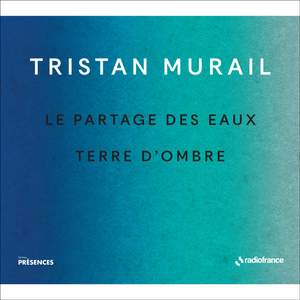Since 1991, Radio France has been organising the Presences festival of contemporary music: several hundred new scores have been heard (a third of them world premieres), and the festival is also characterised by a series of portraits of composers from the late 20th century.
This CD, along with another volume devoted to Kaija Saariaho, marks a new stage of the Presences festival, which is extending its activities to include discs.
Tonal versus atonal, consonant versus dissonant, neo-classical versus serial, reactionary versus avant-garde, those who mourn a dreamed-of golden age versus those who claim to embody the meaning of history, Landowski versus Boulez, the list goes on and on. These binary and caricatured oppositions have fuelled a debate that has dominated the 20th century, and which is still sometimes in turmoil today.
In this context, we are struck by the emergence of spectral music, of which Tristan Murail is one of the initiators and most brilliant exponents. Spectral music proved that history could emerge from this sterile debate, that new territories of sound and harmony existed, that consonances were possible without being part of a backward-looking approach --in short, that composers could move forward, continuing to invent, without having to resort to historically exhausted systems, such as those of tonal music or serial music.
The advent of spectral music was a major turning point in the great history of music, and its scope is such that its concepts, vocabulary (spectrum, fusion, partials, transients, inharmonics, etc.), writing principles and approach to sound and time have spread throughout the world and over several generations.
Few composers today have not been influenced in one way or another by spectral music. From George Benjamin to Kaija Saariaho, from Jonathan Harvey to Fausto Romitelli, via Philippe Hurel, Marc-Andre Dalbavie and Magnus Lindberg, spectral music and its concepts are everywhere.





